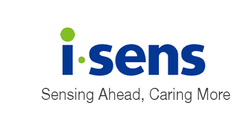
What Is Secondary Hypertension?
What Is Secondary Hypertension?
Most cases of hypertension, or high blood pressure, have no identifiable cause and are referred to as primary hypertension.1 However, in about 5-10% of adults with hypertension, an identifiable and potentially curable cause can be found.1–3 Hypertension with an identifiable cause is referred to as secondary hypertension.
What Causes Secondary Hypertension?
Certain medical conditions, substances, and medications can significantly affect blood pressure and sometimes cause secondary hypertension.2 Here are some of the most common causes of secondary hypertension.
Primary Aldosteronism – Primary aldosteronism is one of the most common causes of secondary hypertension in adults, occurring in about 8-20% of individuals with hypertension.2 It comprises of various disorders of inappropriate aldosterone production, a hormone produced by the adrenal glands situated on top of each kidney. Unsuppressed secretion of aldosterone leads to retention of sodium and causes hypertension, kidney damage, and increased potassium excretion. Hypertension caused by primary aldosteronism can be treated either surgically or pharmacologically. When only one adrenal gland is affected, a surgical procedure can treat hypertension in almost all patients. When both adrenal glands are affected, patients are treated with medications such as spironolactone, which can also effectively improve blood pressure.
Obstructive Sleep Apnea – Obstructive sleep apnea is a chronic condition marked by the collapse of upper airways during sleep.2 It causes temporary cessation of breathing, lower levels of oxygen, and sleep disruption and is known as a risk factor for hypertension as well as several cardiovascular diseases. Obstructive sleep apnea is observed commonly in individuals with resistant hypertension, a type of hypertension unresponsive to aggressive pharmacological treatment. The use of a continuous positive airway pressure machine, which uses mild pressure to open airways during sleep, is recommended to improve blood pressure.
Renovascular Disease – Renovascular disease comprises of various conditions that affect the vasculature of the kidneys.2 For instance, atherosclerosis (ie, build-up of cholesterol plaques in the blood vessels) can cause the narrowing of arteries in the kidneys that restrict blood flow and can cause hypertension. Pharmacological therapy using antihypertensive medications such as renin-angiotensin system blocker is the preferred treatment method. Although surgical procedure involving revascularization of renal arteries carries high risk, it may be recommended in individuals who do not respond to medications.
Drugs, Alcohol, and Other Substances – Prescribed or over-the-counter medications, illegal or recreational drugs, alcohol, and other substances may cause secondary hypertension in 2-4% of adults with hypertension.2 Non-steroidal anti-inflammatory drugs (eg, Ibuprofen), oral contraceptives, cold medications, amphetamines, and sodium-containing antacids are some examples of medications that can cause hypertension in rare cases. Excessive amounts of alcohol, caffeine, and herbal agents can also lead to elevated blood pressure. Cocaine and other illegal drugs are also culprits. In cases when prescribed or over-the-counter medications cause hypertension, lowered dosages or alternatives of medications are recommended. Additionally, alcohol intake should be limited to <1 drink and <2 drinks for women and men, respectively, and caffeine intake should also be limited to <300 mg/day and avoided altogether in adults with uncontrolled hypertension as it can cause temporary increases in blood pressure. Illicit and recreational drugs should be discontinued or avoided.
What Prompts Screening for Secondary Hypertension?
Individuals with hypertension of certain characteristics should be screened for underlying causes.2 Screening for secondary hypertension is recommended for adults with new-onset or uncontrolled hypertension with the following characteristics:
- Abrupt onset of hypertension
- Onset at an age younger than 30 years
- Drug-resistant hypertension
- Exacerbation of previously controlled hypertension
- Hypertensive emergency
- Onset of diastolic hypertension in older adults over the age of 65
- Excessive or unprovoked hypokalemia
- Disproportionate target organ damage for degree of hypertension
|
References: |
(Disclaimer)
The content of this article is intended to provide a general information and knowledge on the subject matter. The views expressed in newsletters, articles, and blogs in the i-SENS USA website are not necessarily those of i-SENS Incorporated, i-SENS USA Incorporated or our publishers. Medical or nutritional information on i-SENS USA website is not intended to replace professional medical advice – you should always consult a specialist with any questions about your specific circumstances.





Add a comment